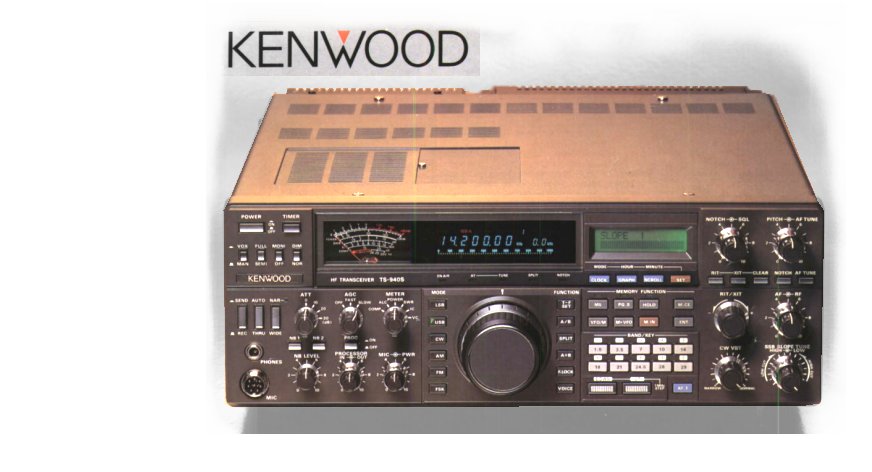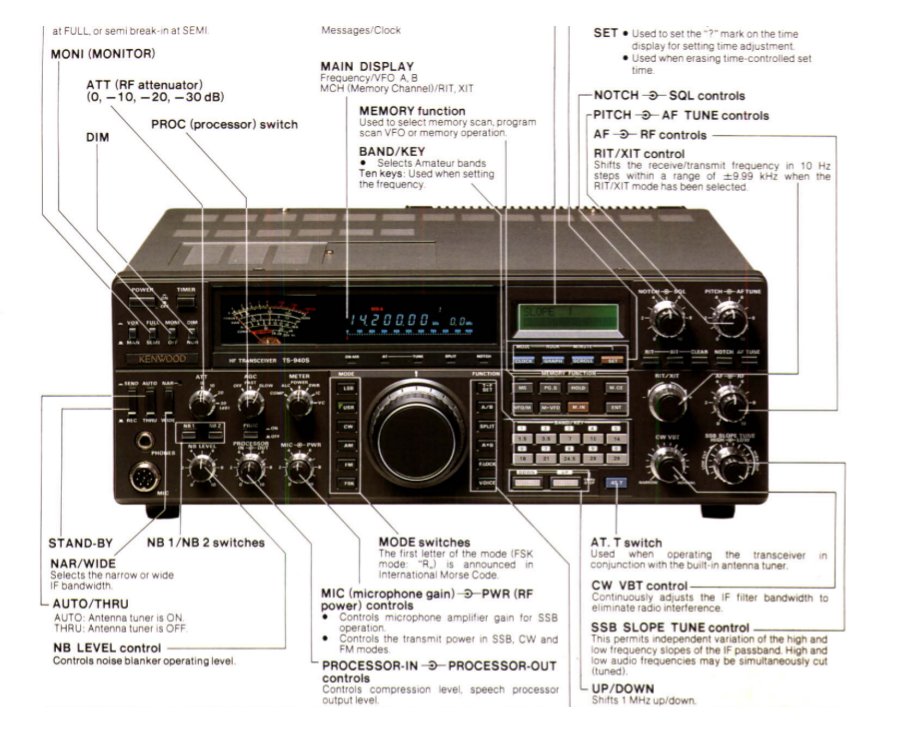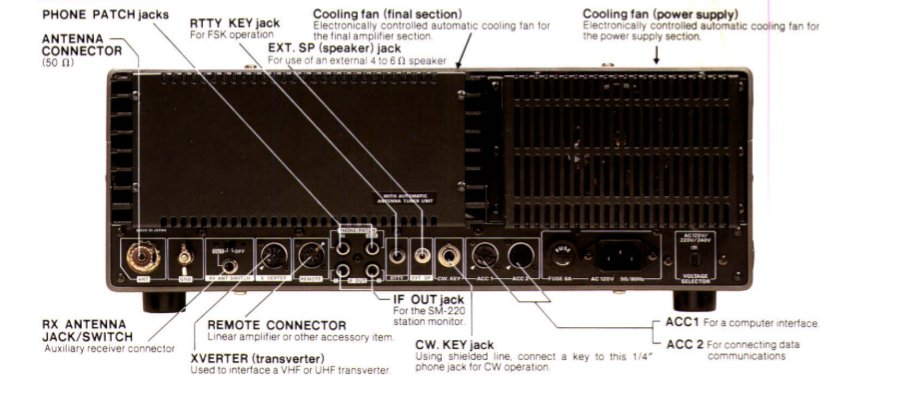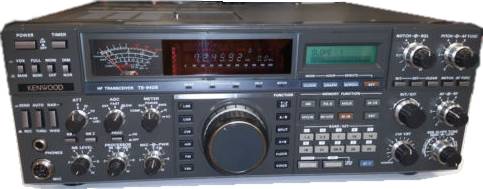Kenwood TS-940SAT
The Kenwood TS-940S/AT was manufactured at and after 1986. At the time Kenwood considered it their top of the line competition class HF radio until it was later surpassed by their newer model TS950DX.
The Kenwood TS-940S is the same as the TS-940SAT except without the automatic antenna tuner. The "AT" after the S is for Antenna Tuner.
Features
160-10 meters IF Notch CW Reverse 40 Memories Automatic Tuner |
|
CW VBT SSB Slope Tuning Memory Keyer Variable AGC Sub-display |
From Kenwood product propaganda:
Competition class HF transceiver
TS-940S-the standard of performance by which all other transceivers are judged. Pushing the state of the art in HF transceiver design and construction, no one has been able to match the TS-940S in performance, value and reliability. The product reviews glow with superlatives, and the field -proven performance shows that the TS-940S is "The Number One Rated HF Transceiver!"
- 100% duty cycle transmitter.
Kenwood specifies transmit duty cycle time, The TS-940S is guaranteed to operate at full power output for periods exceeding one hour 1 14.250 MHz. CW, HO watts.) Perfect for RTTY SSTV and other long-duration modes.
- Extremely stable phase locked loop (PLL) VFO, frequency accuracy is measured in parts per million!
Operation
controls
FUNCTION switches
- T-FSET switch - Depress this switch to "SPOT", or momentarily interchange reception frequency with transmission frequency. Frequency "SPOTTING" is possible only in receive and is ineffective during transmission
- A/B - Selects the VFO or VFO B.
- SPLIT - For split frequency operations A-R, B-T OR B-R,A-T.
- A=B - During VFO operation, press this switch to equalize the frequency and mode of the idle VFO to that of the active VFO.
- F.LOCK - Press this switch to lock the VFO and BAND switches.
- VOICE - Announces the frequency when an optional VS-1 is installed inside the cabinet.
Review
some of the known issues
- LCD Sub Display not working
- Memory channel loses information
- Intermittent Transmit, all bands
- Intermittent Receive, all bands
- Internal antenna tuner not working
- Bad/cold solder joints
- RF Preamp FET incorrectly installed
production run improvements
Based on which production run the radio is from may determine what problems you will have. If you can power it up then down again and the S-meter slams to the right, it's the first production run and may have a number more problems than later runs where factory assembly defects were corrected.
Based on the serial number you can tell the year of manufacture. It is the first digit of the SN that is the year of manufacture. If the SN is 6xxxxx then it was made in 1986. I have a unit with the serial number 7100019 which makes it a 1987 production year which is still part of the first production run as its S-meter slams to the right when powered off. It also seems to exhibit many of the known issues that are well known for this model.
Quoted from N8YX, "any folks opine that any serial number above 7 million is "safe", while others swear that the magic number is 8 or even 9 million+."
power supply
"The later version's IF board can be swapped into an earlier unit and this will cure many (problems). Also look into upgrading the power supply cooling arrangement. Citation from N8YX
The power supply fan operates on 12VDC. Sometimes when the OEM fan tests good on external power, it could be that under load the fan is not getting sufficient voltage from inside the unit. Under load it has been reported that the voltage measured on a meter dropps from 17v down to 3v. This relates to a problem with the AVR board. Modern computer fans can serve as excellent replacements in the fan is bad.
maintenance
A semi-skilled tech should have no problem keeping one on the air. Pay close attention to the AVR pass-transistor cooling fan (or replace it). Most problems of an intermittent nature with a rig this old can be traced to questionable connectors on the various circuit boards. Resoldering them is a tedious job but aside from replacing memory batteries (or re-peaking the VCO tuning coils, if necessary) is usually all that's required in the way of maintenance (for the TS-940S transceiver.) Citation from N8YX
Documentation Downloads
Service Manual, Individual Board Schematic Diagrams, and other Product Literature from Kenwood.
- AT Unit schematic
- Control Unit schematic
- Digital Unit, Switch Unit, RIT Encoder Unit schematics
- IF Unit schematic
- PLL Unit, CAR Unit schematics
- RF Unit, LPF Unit, Final Unit schematics
- 2 page schematic TS-940S (scanned)
- TS-940S HF Transceiver brochure
- Original Service Manual (scanned)
- New Revised Service Manual
- TS-940S Technical Information (scanned)
Related
This radio uses slope detection, which is a way to receive an FM (or PM) signal on an AM receiver.
The cooling fan on the back is temperature sensor based rather than timer based, according to a HAM radio source online. It is a recommended modification to make it so the fan runs all the time, which is accomplished by jumping connector #13.
SSB slope tuning
In SSB slope tuning, one filter passband can be shifted up in frequency and the other filter passband can be shifted down in frequency, effectively narrowing the bandwidth of the combined filters. Basically you can narrow from either end and to what degree best helps to eliminate noise and near frequency interference.
An excellent article on How to maximize your receiver's effective selectivity written by ham radio operator Rob Kalmeijer covers the use of slope tuning.
compatible microphones
Microphones recommended in literature for the TS-940S.
- Kenwood MC-60A - upright desktop microphone
- Kenwood MC-42S - hand microphone with up/down
- Kenwood MC-80 and MC-85 - upright desktop amplified microphones
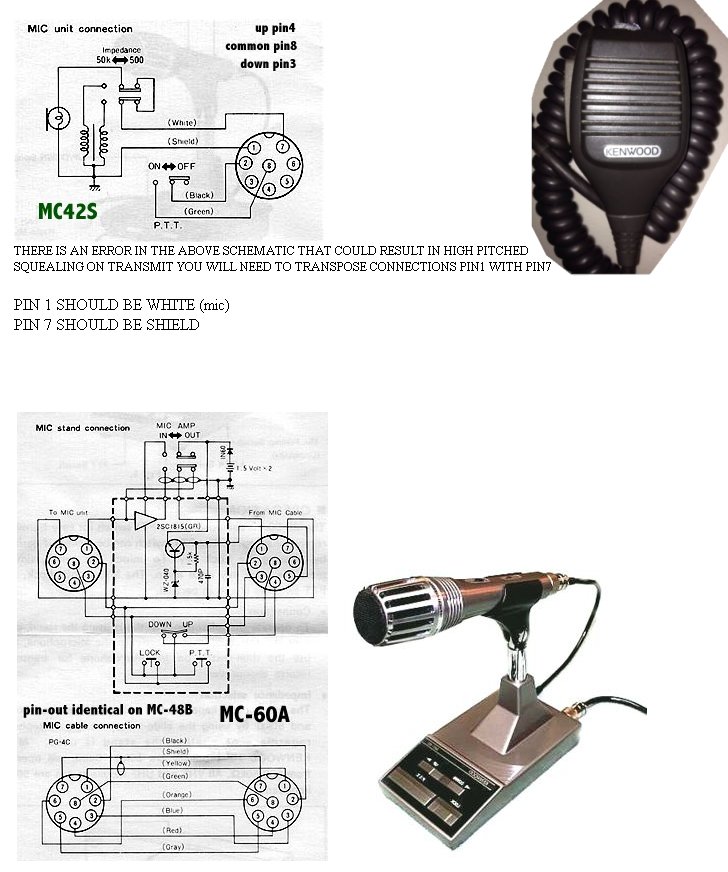
source: rg4wpw Microphone Connections
External Resources
SM2YER Goran product manuals and technical schematics for the TS-940S/AT - I noted that the Service Manual PDF on his site is not a good PDF.
This unit has been out of production for many years. Get an idea of the used market prices by looking at these Kenwood TS-940SAT classified on Universal Radio Inc.
KENWOOD TS-940S/AT PLL Wax Woes: Almost everyone who owns a Kenwood TS-940, TS-440 and a few select other transceivers or even the R-5000 receiver will have heard, or experienced, the dreaded PLL wax potting curse.
Repairing a Kenwood TS-940S (g4urh)
RF Preamp FET mod/repair to improve receive sensitivity; Kenwood TS-940 Assembly Error Corrections
Competent Service / Repair
David Lyndon aka Old Ham Dave - (AK4AA) repair, align, and refurbish.
Clif Holland AVVid - (KA5IPF) repair of most Kenwood Amateur Radio Equipment
